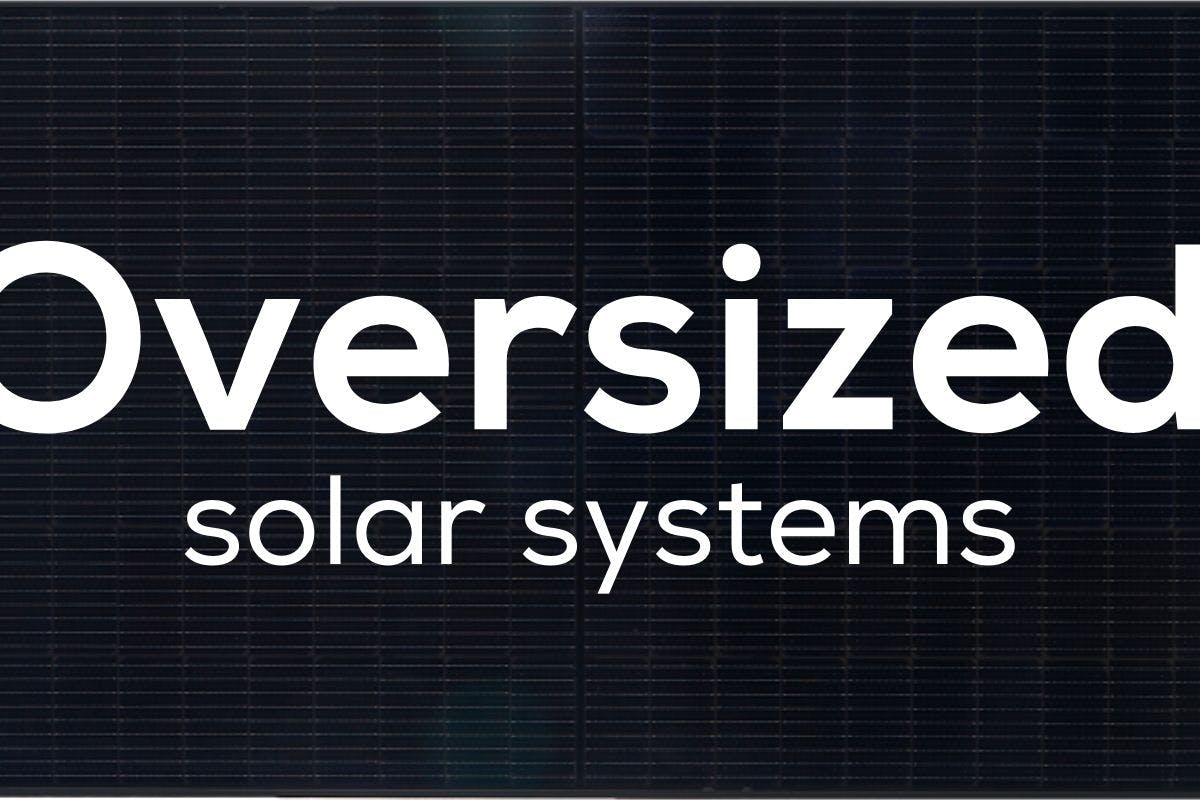A lot of people will tell you that you can never have too much of a good thing, but there are limits to the amount of solar energy that you can put on your roof or out in your yard.
In this article, we will look at solar panel limits and explain how and why you may want to oversize your system when installing solar on your property.
Solar Panel Installation Limits
In the United States, there is no defined limit on the exact number of solar panels that can be installed on a property and used to generate electricity.
For instance, if you were building the next great off-grid eco-retreat in the mountains of Montana, you may be able to install as many solar panels and batteries as you would like in order to run all of your electricity with emission-free power.
However, if your home is tied to the grid (which it almost always is), the number of solar panels that you can install will most likely be limited by your local building authority or utility service provider. In most of these instances, your solar installation limits will be directly related to the amount of electricity you consume on your property.
As close to an industry standard as there is, most residences in the US are forced to follow the “120% Rule” of the National Electric Code. This rule enforces that grid-tied solar energy systems can only be installed at a capacity that will generate up to 120% of the home’s electricity consumption.
For example, if your home uses 10,000 kWh (kilowatt-hours) of electricity annually, you would likely only be able to install a solar system that will generate up to 12,000 kWh of electricity per year. Depending on your location, this may equate to somewhere between 22 and 28 solar panels.
Learn more: How many solar panels do I need on my roof?
Oversizing Your Solar System
When looking at your solar options, an “oversized” system is defined as any installation expected to produce over 100% of your property’s annual power consumption. Knowing that most utilities follow a 120% rule, oversized systems may generate anywhere between 100% and 120% of your home’s electricity demand. When applying for permits, systems oversized beyond 120% of your home’s electricity consumption may be rejected if past your utility’s capacity limits.
What happens if you oversize a solar system?
If you and your installer decide to oversize your solar energy system, then it will likely produce more electricity annually than your home consumes – especially if you maintain the same usage habits on your property after the installation. With this surplus of solar power, compensation via net metering will minimize your electricity bills, and you will likely only pay unavoidable utility service charges, rather than continuously purchasing grid-supplied power.
Learn more: Will I have an electric bill with solar panels?
Should you oversize your solar system?
While most of us do not have acres and acres of land to build a profitable solar farm, you may be one of the lucky homeowners with ample roof or yard space to host a plethora of solar panels that will receive direct sunlight daily. Almost always worth its investment, an oversized solar system comes with the following pros and cons.
Oversized Solar System Pros
- More solar energy: Who doesn’t love more solar energy? There are many benefits of a little extra solar production – whether you would like to always keep your utility bills low or plan to store your extra energy in a solar battery onsite.
- Future-proofing: If you plan to electrify your home and pivot away from fossil fuels as much as possible, extra solar can help keep your ongoing power costs low. By installing an oversized solar system, you can be prepared for possible electricity consumption increases from your new electric stove, heating system, or EV.
- Reduced costs per panel: When considering the overhead costs of a solar project, adding a few extra panels may not dramatically increase your installation’s total price point, especially if your roof is relatively uniform. With extra production at reduced total costs per panel, oversizing your solar system can speed up your project's payback period.
- Increased tax credits: Available at up to 30% of your total project costs, there is no limit on the value of the Clean Energy Tax Credit you can redeem on your income taxes after installing solar. Knowing that a few extra panels will increase your project costs, it is important to keep in mind that the extra investment will also increase your potential tax credit.
Oversized Solar System Cons
- Increased costs: Of course, more solar capacity equates to higher upfront costs, and the project expenses for extra panels, wiring, mounting materials, and labor can add up quickly. Unless your extra solar panels can receive direct sunlight during peak sun hours every day, their added output may not outweigh their upfront costs in a significant enough manner to make oversizing your system worth it.
- Lower payouts: Before going solar, it is important to realize that most utilities do not always pay full retail rates for the energy you share with the grid, especially at large surpluses. Therefore, if you are producing significantly more solar energy than you are using, you might not be able to make money with solar panels in the way you may have imagined. For instance, ultrafast payback periods are tough to achieve if your utility only compensates you for your surplus solar production at pennies on the dollar.
Learn more: Solar Panel Payback Period (Guide)
Summary and Next Steps
In summary, an oversized solar panel system is a great, future-proof way to increase your renewable power production and maximize your home energy investment. By pushing your available solar panel capacity to its limits, you may be able to get more “bang for your buck” during your installation, followed by years and years of utility bill savings and significant solar power generation.
If you would like to see your solar energy options – including everything from design to savings – Palmetto is here to help maximize the value of your solar system.

